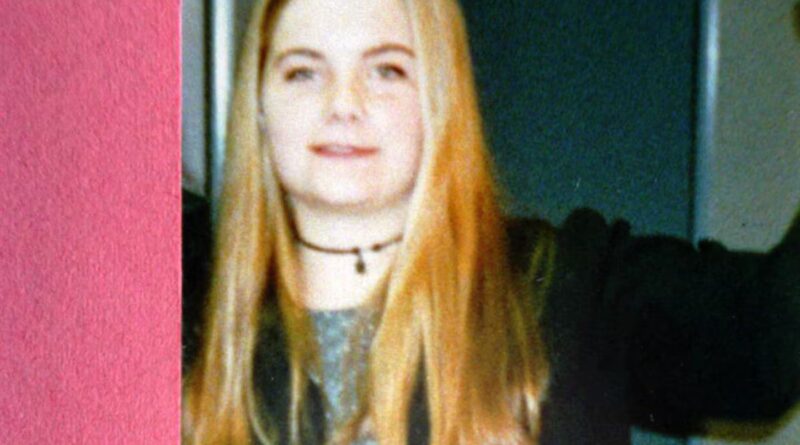Karina Holmer Killed and Found inside Trash Dumpster in Boston Massachusetts
Karina Holmer wasn’t just another face in the crowd — she was a bright, adventurous young woman with dreams of seeing the world. Born in the small, peaceful village of Skillingaryd in Sweden, Karina was known for her kindness, love of nature, and a quiet determination to live life beyond the pages of the ordinary. She’d always had an independent streak, and it was that bold spirit that set her on a path to the United States.
At just 19 years old, Karina’s life took a sudden turn when she scratched off a lottery ticket and won around $1,500. For many teenagers, that might have meant shopping sprees or vacations — but for Karina, it was a sign. That money became the launchpad for her American dream. With her family’s support, she enrolled in a program to work as an au pair in the United States. It was the beginning of what she hoped would be an exciting chapter filled with opportunity, cultural exchange, and new friendships.
She arrived in Boston in early 1996 and quickly settled into life with her host family: Frank Rapp, a well-known commercial photographer, and Susan Nichter, a respected artist and professor. The couple lived in Dover, a quiet and affluent suburb of Boston, and had two small children. Karina’s responsibilities included caring for the kids and helping with light housework — standard duties for an au pair. On weekdays, she stayed in their suburban home, but weekends were hers to explore.
And explore she did. Boston in the ’90s was electric — a city teeming with college students, historic landmarks, and a buzzing nightlife. Karina soaked it all in. She connected with fellow au pairs, often spending weekends in South Boston, staying at Rapp’s loft in the city, where she had access to the sights and sounds of an entirely different world from the one she’d known back in Sweden.
She documented her experiences through letters home. Her family remembers those messages fondly — cheerful updates sprinkled with subtle notes of homesickness. But toward the end of her stay, her tone shifted. In one letter, she cryptically mentioned that something “terrible” had happened and that she wanted to return home earlier than planned. She never elaborated on what that terrible thing was.
Sadly, Karina never made it back home. Her time in America — and her life — came to a sudden and horrific end just months after her arrival.
The Night of June 21, 1996: A Celebration Turned Tragic
Midsummer is one of the most beloved holidays in Sweden — a day steeped in sunlight, tradition, music, and joy. For Karina Holmer, it was also a piece of home she brought with her across the Atlantic. On Friday, June 21, 1996, Karina was in high spirits, preparing to celebrate the Swedish summer solstice with friends. Dressed in a silver, glittery top and black pants, she headed into Boston’s Theater District — unaware it would be the last night of her life.
Karina and her friends made their way to Zanzibar, a popular nightclub tucked into Boylston Place. It was a hotspot in the ’90s — packed on weekends with music lovers, partiers, and twenty-somethings just looking for a good time. Though Karina was only 19 — underage by U.S. law — she, like many others, managed to get in using a fake ID. Once inside, she drank, danced, and socialized like any carefree young woman her age.
Multiple witnesses recall seeing her inside the club. By all accounts, she seemed happy and engaged, chatting with different groups and enjoying the atmosphere. But as the night wore on, the crowd began to thin, and sometime around 3:00 a.m., the club began closing down.
This is where the timeline gets murky.
Karina’s friends had already left Zanzibar earlier in the night, leaving her to find her way back to South Boston on her own. Reports suggest she briefly left the club but then tried to re-enter — a bouncer turned her away. After that, witnesses claimed she was seen in the alley near the club talking to several different people, including a man walking a golden retriever dressed in a matching Superman shirt. This odd, almost cartoonish image would later become a symbol of the mystery surrounding her death.
Another eyewitness recalled Karina getting into a car with an unidentified man. Yet others say she was seen stumbling, possibly intoxicated, trying to figure out how to get home. In the chaos of a busy nightlife scene, small details became difficult to track. And in that confusion — that hazy, in-between moment when the party ends and the streets empty — Karina vanished.
By the time Saturday morning dawned, Karina Holmer was already gone. She didn’t return to the Rapp household, didn’t contact her friends, and never reached out to her family. Her sudden silence was deafening — the first chilling sign that something had gone terribly wrong.
A Grisly Discovery in the Heart of Boston
Sunday, June 23, 1996, started out like any other summer morning in Boston — the city buzzed with early risers, Red Sox fans, and people going about their routines. But near Fenway Park, behind a busy apartment building at 1901 Boylston Street, a man scavenging for recyclables made a discovery that would haunt the city for decades.
Tucked inside a green dumpster, wrapped in black trash bags, was the upper half of a woman’s torso. No identification. No personal belongings. Just the horrifying reality of a dismembered body left like garbage in a city alley.
The Boston Police Department quickly cordoned off the area, and a full investigation was launched. Within hours, the torso was identified through fingerprints as Karina Holmer — the Swedish au pair who had disappeared just 48 hours earlier. She had been strangled to death, and her body was cut cleanly in half at the waist. The lower half was never found.
The autopsy revealed something even more disturbing: her body had been washed, and there were no signs of sexual assault. The cuts were so precise, some speculated that the killer had surgical or anatomical knowledge — perhaps a butcher, a hunter, or even someone in the medical field. It wasn’t a chaotic or rushed disposal. It was methodical. Intentional. And chillingly efficient.
What made the case more bewildering was the location of the body’s disposal. The area behind 1901 Boylston was not secluded — it was a well-trafficked spot near a busy intersection. Whoever dumped her torso there did it either late at night or early in the morning — in plain proximity to homes, businesses, and public foot traffic. It suggested boldness. Confidence. Maybe even familiarity with the area.
But beyond the body itself, there was almost no evidence. A partial fingerprint was lifted from the trash bag, but it didn’t match anyone in existing databases. Surveillance footage was limited in the mid-1990s, and no cameras captured the crucial window of time. With no murder weapon, no crime scene, and no eyewitnesses, police were left with little more than a horrifying mystery and a grieving family across the ocean.
Media frenzy followed. Boston tabloids and national news outlets latched onto the story — a beautiful foreign nanny butchered and discarded like waste. The headlines sensationalized her looks, her lifestyle, and her last night out. But beneath the noise was a deeply tragic and very real loss: a 20-year-old with dreams, family, and a whole life ahead of her — snuffed out without explanation.
And yet, the deeper investigators dug, the more complicated things became.
The Investigation: Suspects, Dead Ends, and Unanswered Questions
From the moment Karina’s remains were identified, Boston police faced an uphill battle. With no known enemies, no clear motive, and a surgically precise crime, detectives found themselves chasing shadows. Still, their first step was to retrace her final hours and look closely at those in her immediate circle — starting with her host family.
The Rapp-Nichter Household
Karina had been working for Frank Rapp and Susan Nichter in Dover, Massachusetts. On the surface, they seemed like the ideal host family — artistic, affluent, and progressive. Rapp was a prominent commercial photographer, and Nichter a respected professor and painter. But as investigators looked closer, questions emerged.
Karina spent her weekends at Rapp’s South Boston loft — an arrangement that, while not unusual for an au pair, drew some attention. The space was above a nightclub, near the city’s nightlife scene, and it’s where she would stay after going out with friends.
Rumors swirled that Karina may have had a closer relationship with Frank Rapp than was appropriate. There was no confirmed evidence of an affair, but gossip fed speculation. Detectives questioned both Rapp and Nichter. Their responses were guarded, and their timeline was consistent, but suspicion lingered. If Karina had felt unsafe or uncomfortable in the household — as hinted in her cryptic letters home — it could suggest motive, or at least context.
Still, no physical evidence tied the couple to the crime. No blood, no prints, no DNA. Just questions.
The Man with the Dog
One of the most bizarre and consistent witness accounts came from people who saw Karina outside Zanzibar with a man walking a golden retriever, both wearing matching Superman T-shirts. This surreal image stuck in the minds of many and led police to a man named Herb Whitten, an eccentric local who often wandered the area with his dog dressed in costumes.
Whitten had a strange reputation and reportedly lived out of a van. When police searched his vehicle, they found a handsaw and other items that raised eyebrows — but none that linked him definitively to the crime. No blood. No forensic evidence. Just a man with odd habits and a dog in a cape. He was never charged.
Other Leads and Theories
Other potential suspects were questioned — from bouncers at the nightclub to people seen in the alley that night — but nothing stuck. Every lead hit a wall. Every tip led to a dead end.
The precise nature of Karina’s dismemberment suggested the killer had experience with anatomy. That sparked theories ranging from a rogue surgeon to a butcher to a mortician. Some even wondered if her murder had ritualistic elements — a theory that never bore fruit but captured public imagination.
And then there were the darker whispers: that Karina had stumbled upon something she shouldn’t have — a secret, an affair, or criminal activity — and paid the price. Her cryptic letter home only added fuel to those fires.
But despite national attention, international headlines, and a dedicated cold case team, no one was ever arrested. Her case remains open, but frozen in time.
Theories That Still Haunt: What Could Have Happened to Karina Holmer?
With so few hard facts and so many bizarre details, the murder of Karina Holmer has given rise to countless theories — each one as haunting as the last. Some are grounded in reason, others in speculation. But together, they paint a mosaic of possibilities that continue to both fascinate and frustrate investigators and true crime enthusiasts alike.
The Secret Affair Theory
One of the most enduring theories suggests that Karina may have had a secret romantic relationship — or at least an emotional entanglement — with someone in her host household, specifically Frank Rapp. The speculation is fueled by:
- Her weekends spent at Rapp’s loft, separate from the family home.
- The suggestion in letters home that something “terrible” had happened.
- Her desire to return to Sweden earlier than planned.
If Karina had discovered something inappropriate — or had become involved in a situation she regretted — could someone have silenced her to protect a reputation, a marriage, or a career?
Still, no direct evidence has ever substantiated this theory. Police have never declared Rapp a suspect. But the possibility lingers in the background, a cloud that refuses to fully dissipate.
The Wrong Place, Wrong Time Theory
Another theory is the simplest — and most random. Karina, alone and potentially intoxicated, may have encountered a stranger after leaving the nightclub. This person could have offered her a ride or lured her with kindness. Given the chaotic nightlife around Zanzibar, this theory holds weight.
It assumes her murder was opportunistic — committed by someone who took advantage of her vulnerability and managed to vanish without a trace. But then comes the detail that makes this scenario more complex: the precise bisection of her body. That’s not something typically seen in a spur-of-the-moment crime.
This leads to sub-theories involving someone with surgical knowledge or access to facilities to clean and dispose of a body.
The Man with the Dog
The mysterious man in matching Superman shirts with his dog remains one of the most memorable yet frustrating aspects of this case. Multiple witnesses reported seeing him with Karina — he was one of the last people known to be near her.
But police never found a concrete link between him and the murder. It’s possible he was just an eccentric bystander. Or — as some believe — he may have been part of a darker narrative, one that never made it to the surface.
A Human Trafficking or Underground Scene?
Some fringe theories go even deeper — suggesting Karina may have unknowingly stumbled into something far more sinister. A few online investigators have speculated that she may have been targeted by someone involved in trafficking or underground operations. Her clean background, youth, and beauty made her stand out — and perhaps made her vulnerable.
These theories often lack evidence, but they reflect the desperation to explain the unexplainable. When the facts stop making sense, the mind tries to connect dots in whatever way it can.
The Unfinished Clue: Her Cryptic Message
Perhaps the most haunting clue is Karina’s own words in a letter home, saying that something terrible had happened. That line — never expanded upon — has become the heart of speculation. Was it a warning? A premonition? A confession?
Without more context, it’s impossible to know. But if Karina had been scared or felt unsafe, it makes her final night out even more tragic — a young woman trying to find joy while quietly carrying fear.
Media Frenzy and Public Obsession: How Karina’s Case Captivated the World
From the moment Karina Holmer’s identity was revealed, her murder became headline news. It wasn’t just the brutality of the crime — it was everything about the case that made it media gold: a beautiful, blonde foreign nanny from a small Swedish village, mysteriously dismembered and dumped in one of Boston’s busiest neighborhoods.
The press jumped on the story. Newspapers plastered her face across their front pages. TV stations ran segments on the crime every night for weeks. The framing often leaned into her image: the “Swedish au pair” was objectified and romanticized in ways that walked the line between curiosity and exploitation. Her sparkling eyes, her last-known outfit, even her smile — all became part of the tragic branding.
But the deeper issue was this: for all the attention the case received, much of it failed to ask the right questions. Instead of holding the investigation accountable or scrutinizing the environment that may have endangered her, the media often focused on her nightlife, her appearance, and her nationality. It was as if she were more a character in a tragic drama than a real young woman with a grieving family.
That being said, public interest never waned. Karina’s story was one of the first high-profile cold cases to migrate into the early internet forums. Armchair detectives, amateur sleuths, and true crime buffs took to message boards in the late ’90s and early 2000s, sharing clippings, personal theories, and wild speculation. As time passed, her story became one of the most discussed unsolved cases online — and still is.
True crime podcasts have also kept her memory alive. Shows like Crime Junkie, Morbid, and Cold Case Files have all dedicated episodes to her case. Each generation of listeners brings new theories, renewed interest, and a community of people who want justice for a girl they never met — but feel connected to all the same.
Documentary filmmakers have pitched projects. YouTubers have analyzed timelines and reconstructed maps of the crime. Reddit is filled with deep dives, FOIA request discussions, and speculation that reads like investigative journalism. Everyone wants to find the missing piece — the clue that unlocks the mystery.
And yet, the Boston Police Department has kept many of the case’s details tightly sealed. Some say that’s standard for a cold case, protecting potential prosecution down the line. Others think the silence reflects discomfort — that maybe someone close to the case was protected, or that investigative errors were made early on.
Whatever the reason, the public obsession with Karina Holmer’s murder isn’t slowing down. If anything, it’s grown more intense — not just because of the mystery, but because of the symbolism. Karina represents all the vulnerable young people who seek adventure, independence, or a new life — and whose dreams are taken from them by violence.
Justice Deferred: The Cold Case That Won’t Go Quiet
As the years ticked by, the energy around Karina Holmer’s case morphed — from shock, to sorrow, to frustration. And yet, even with decades between her death and today, her name continues to echo in the halls of justice and across the digital world.
Boston Police have never closed her case. It remains an open investigation, technically “cold,” but not forgotten. Periodically, detectives review the file, sift through the old evidence, and reconsider the people and places tied to that fateful weekend in June 1996. Leads are still accepted. Tips still come in. And every now and then, a glimmer of possibility breaks the surface.
One of the biggest barriers to progress in Karina’s case has always been the lack of forensic evidence. DNA technology in the mid-90s was rudimentary compared to what we have today. Samples collected then — if preserved properly — could potentially yield results using modern advancements like touch DNA, advanced mitochondrial testing, or even genetic genealogy, the same method that cracked the Golden State Killer case.
But unlike cases where the crime scene is intact, Karina’s murder has unique challenges. Her body was dumped in a separate location, and the actual murder scene has never been found. If investigators don’t know where she died, they can’t go back to reprocess it. That gap has always haunted the case.
Still, there is hope. If the partial fingerprint found on the trash bag was well-preserved, today’s more sensitive biometric databases might finally match it to someone. If new witnesses come forward with details once deemed irrelevant or too risky to share, it could ignite new momentum.
In 2021, as the 25th anniversary approached, the Boston Police Department made a renewed public appeal for information. It was both a plea and a promise — that Karina’s murder would not be shelved and forgotten. Her family in Sweden, now having endured nearly three decades of silence, continues to hope for answers.
Meanwhile, advocates for cold case reform argue that her file — like many others — should be subject to independent review panels, community-led re-investigations, or even reopened with the help of private labs and forensic donors. These groups have successfully solved other decades-old murders. Why not Karina’s?
At the heart of it all lies one simple truth: someone out there knows what happened. Whether it was one person or more, whether they’re still alive or long gone — there is someone who remembers that night with chilling clarity.
The city has changed. Zanzibar is long gone. Boylston Street has been built up, transformed. But the soul of the mystery remains frozen in that Boston summer. A young woman with a hopeful heart stepped into the night — and never came home.
And until that silence is broken, her story will continue to haunt.
Conclusion
Karina Holmer’s story is more than a mystery — it’s a wound that never healed. It’s a portrait of youth, ambition, and innocence shattered by an act of inhuman violence. But it’s also a mirror — showing us the blind spots in our systems, the fragility of safety, and the cruelty that can hide in plain sight.
Though she was only in the United States for a short time, Karina left a lasting impact. Her face remains etched in the memories of everyone who followed the case, from Sweden to Boston and beyond. Her name lives on in thousands of digital threads, true crime circles, and whispered conversations about unsolved cases that feel just too close to let go.
We don’t know what happened to Karina Holmer in the early hours of June 22, 1996. We don’t know why she was taken or what secret — if any — she carried. But we do know this: she deserves answers. Her family deserves peace. And the person who did this deserves to be found.
Maybe science will one day fill in the blanks. Maybe someone, somewhere, will finally step forward with the truth.
Until then, Karina’s story stands as one of the most haunting cold cases in American history — and a quiet demand for justice that refuses to be silenced.
Discover more from City Towner
Subscribe to get the latest posts sent to your email.




